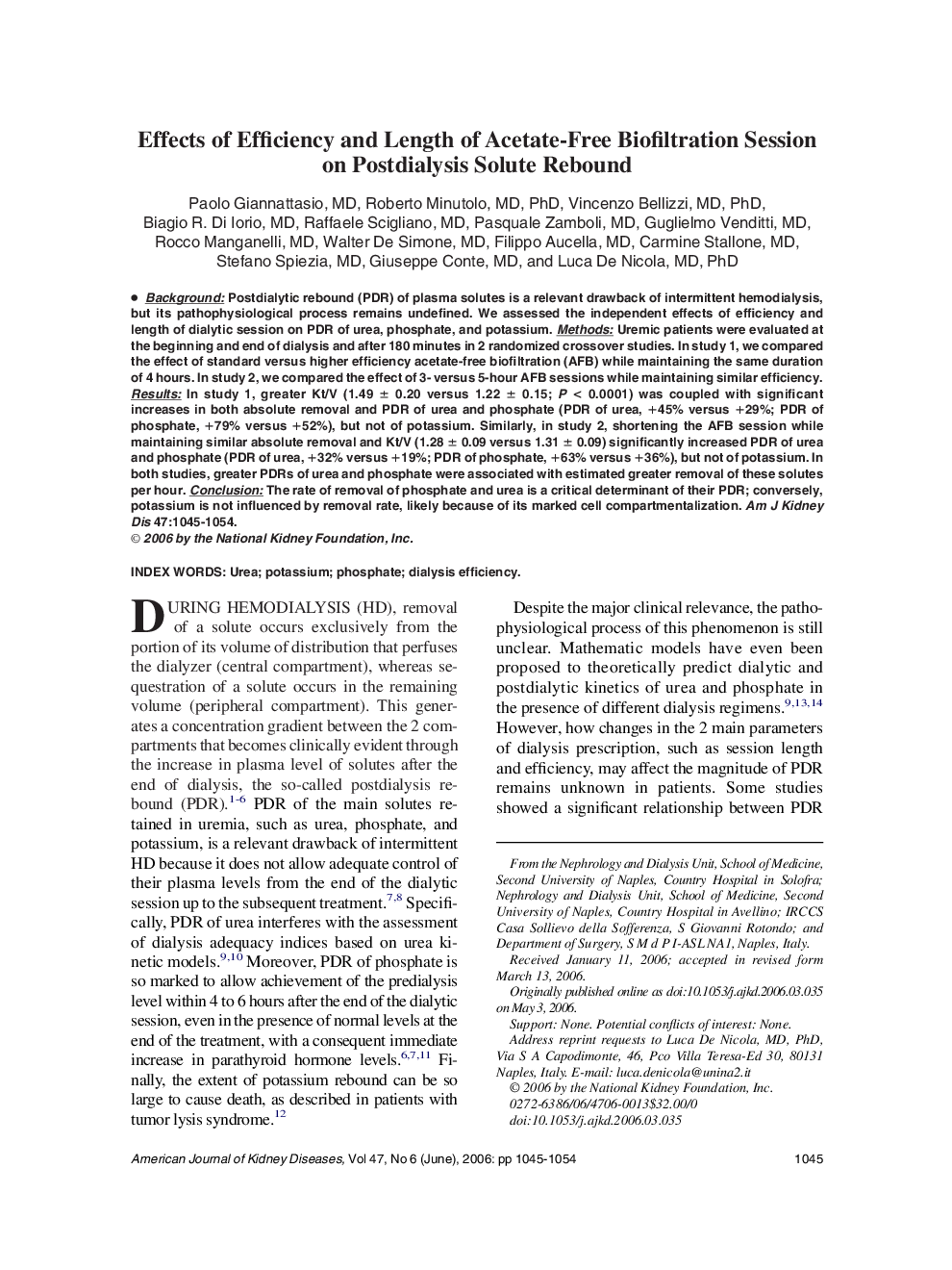| Article ID | Journal | Published Year | Pages | File Type |
|---|---|---|---|---|
| 3852168 | American Journal of Kidney Diseases | 2006 | 10 Pages |
Abstract
Background: Postdialytic rebound (PDR) of plasma solutes is a relevant drawback of intermittent hemodialysis, but its pathophysiological process remains undefined. We assessed the independent effects of efficiency and length of dialytic session on PDR of urea, phosphate, and potassium. Methods: Uremic patients were evaluated at the beginning and end of dialysis and after 180 minutes in 2 randomized crossover studies. In study 1, we compared the effect of standard versus higher efficiency acetate-free biofiltration (AFB) while maintaining the same duration of 4 hours. In study 2, we compared the effect of 3- versus 5-hour AFB sessions while maintaining similar efficiency. Results: In study 1, greater Kt/V (1.49 ± 0.20 versus 1.22 ± 0.15; P < 0.0001) was coupled with significant increases in both absolute removal and PDR of urea and phosphate (PDR of urea, +45% versus +29%; PDR of phosphate, +79% versus +52%), but not of potassium. Similarly, in study 2, shortening the AFB session while maintaining similar absolute removal and Kt/V (1.28 ± 0.09 versus 1.31 ± 0.09) significantly increased PDR of urea and phosphate (PDR of urea, +32% versus +19%; PDR of phosphate, +63% versus +36%), but not of potassium. In both studies, greater PDRs of urea and phosphate were associated with estimated greater removal of these solutes per hour. Conclusion: The rate of removal of phosphate and urea is a critical determinant of their PDR; conversely, potassium is not influenced by removal rate, likely because of its marked cell compartmentalization.
Related Topics
Health Sciences
Medicine and Dentistry
Nephrology
Authors
Paolo MD, Roberto MD, PhD, Vincenzo MD, PhD, Biagio R. MD, Raffaele MD, Pasquale MD, Guglielmo MD, Rocco MD, Walter MD, Filippo MD, Carmine MD, Stefano MD, Giuseppe MD, Luca MD, PhD,
